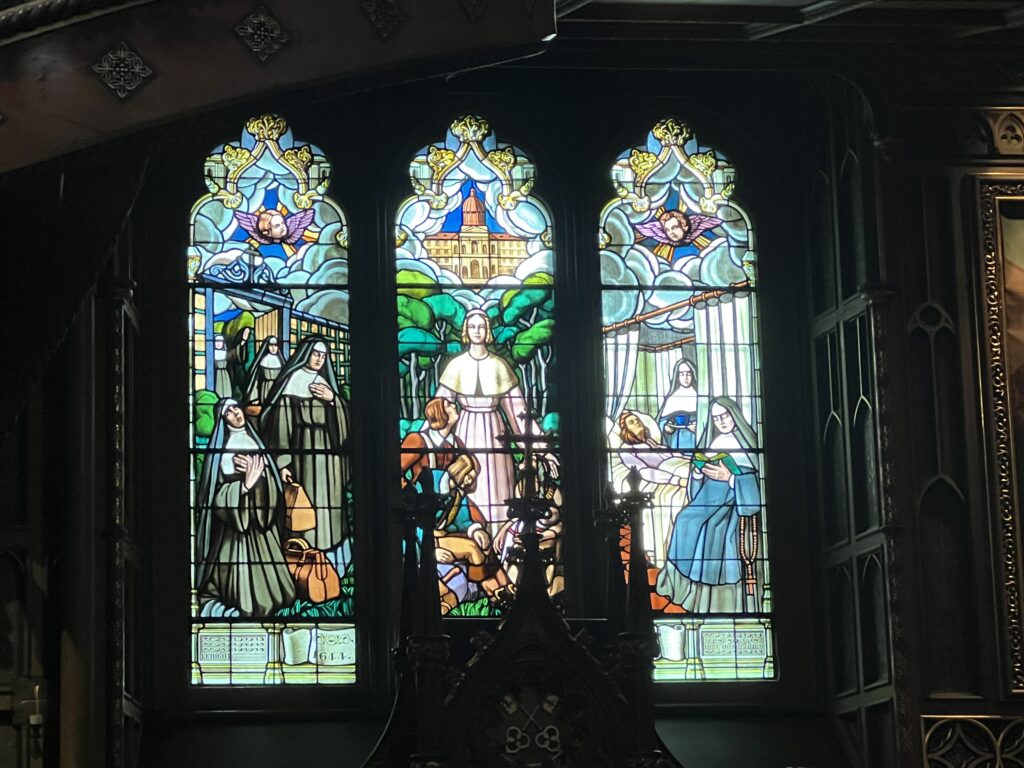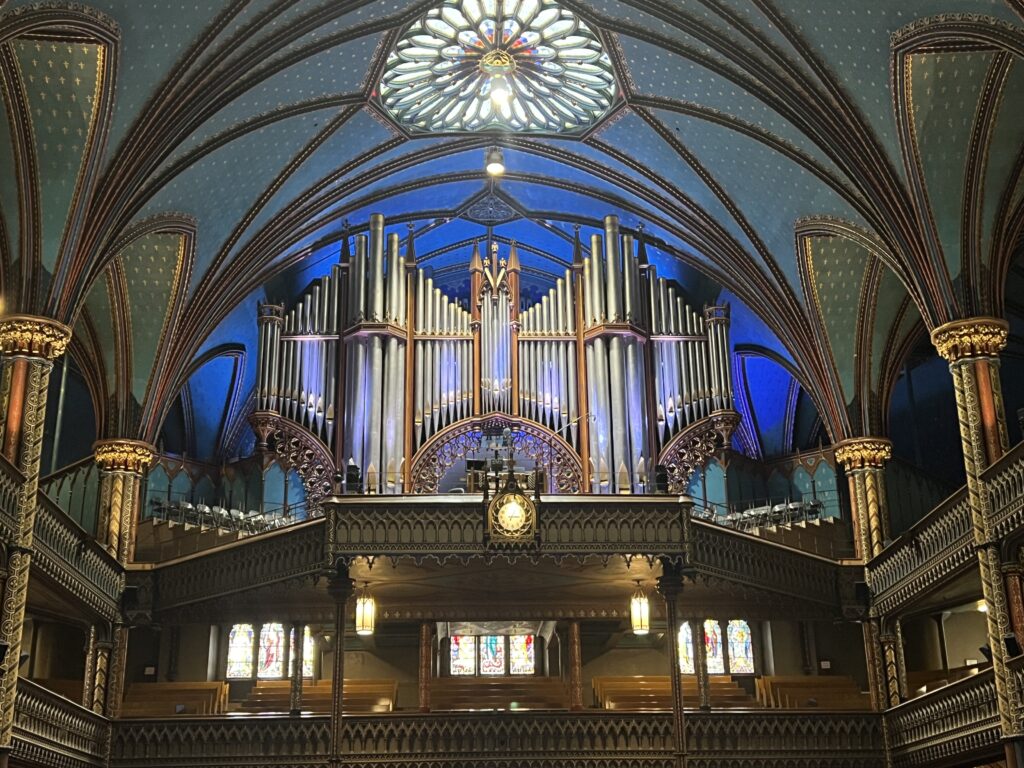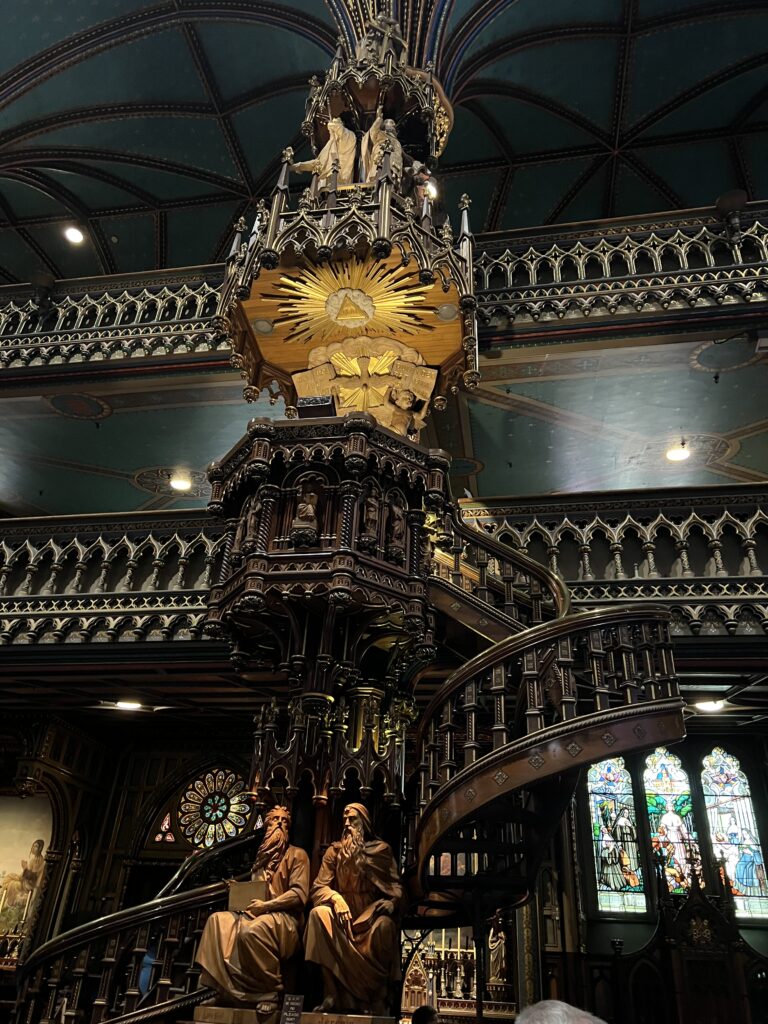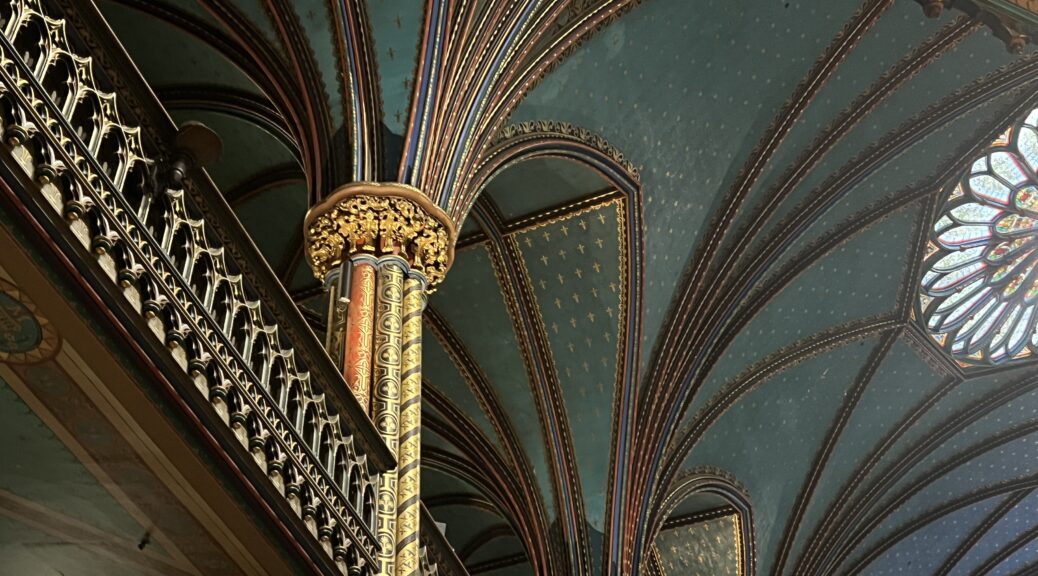
Montreal
Our tour next took us to Montreal, Quebec. Walking in the area near our hotel, we found that public art is important in the community. The first picture below is called “The Ring.” It was installed in 2002. The ring itself is a curved tube, weighing 50,000 pounds. The ring is 90 feet in diameter. When looked through at a certain angle, it focuses one’s attention on structures important in Montreal’s history.
Another art piece we saw is part of “Le Mignonisme” by artist Philippe Katerine. Mignonisme is an artistic movement that celebrates beauty through funny creations. This is one of fifteen sculptures that are collectively known as Monsieur Rose or “Mr. Pink.” They will be on display in Montreal through the end of September, 2024.
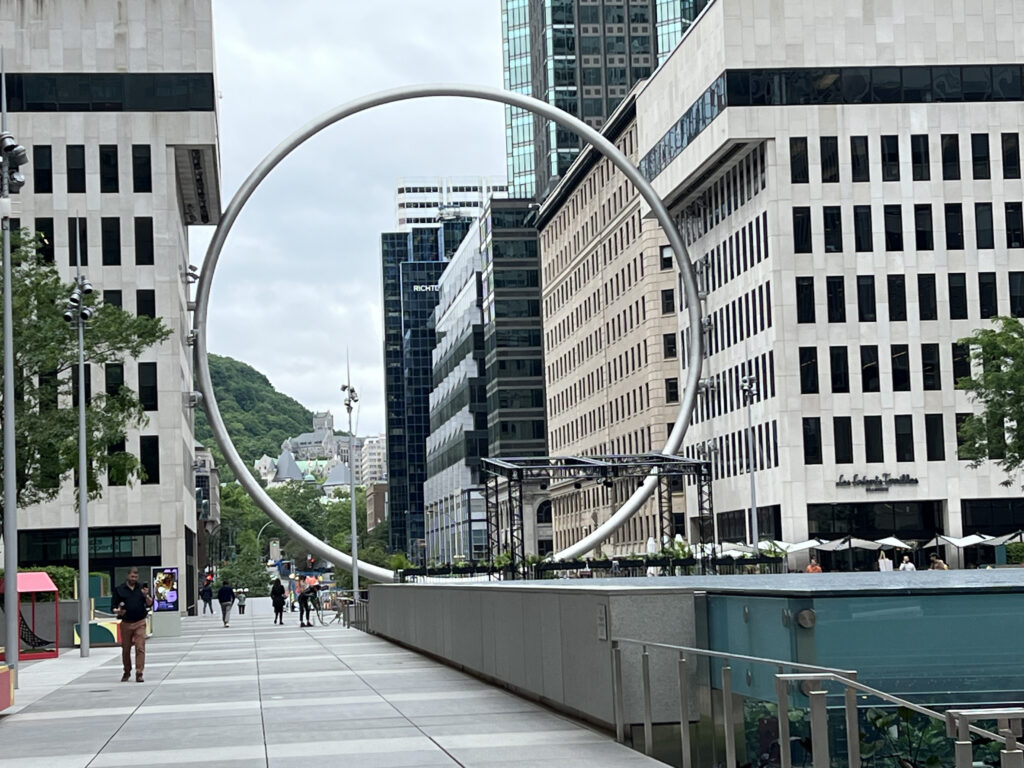
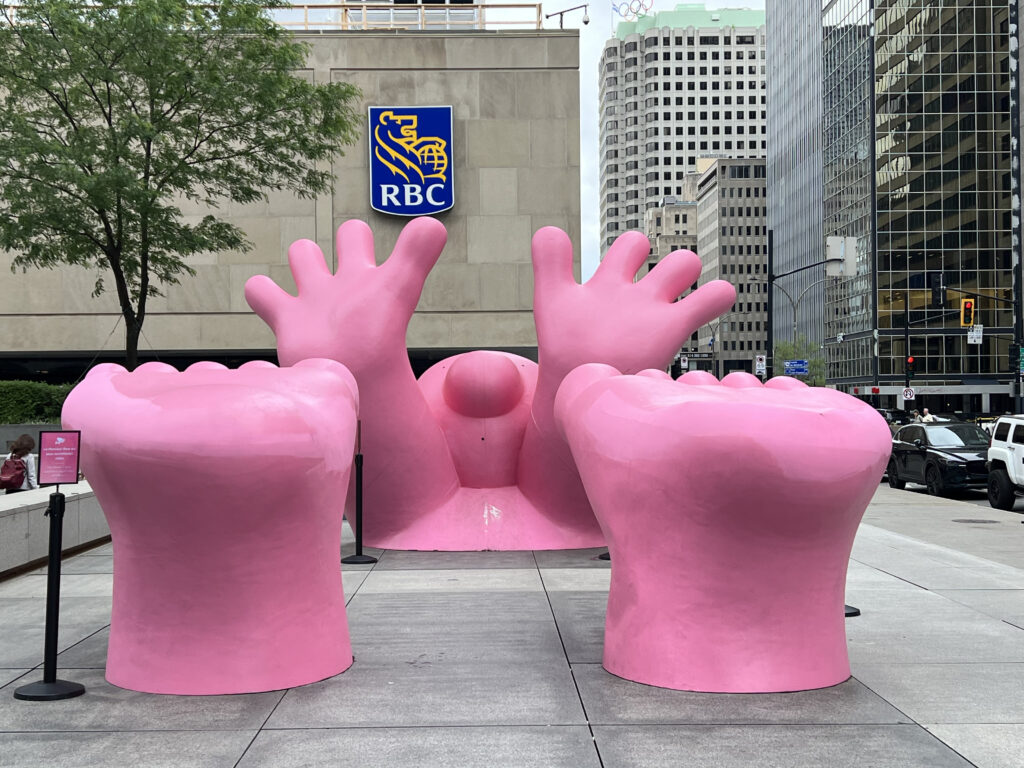
We did a walking tour in Montreal. One of the first points of interest was a subway entrance, a gift to Montreal from Paris in 1967. The first European settlers in Quebec were from France and French is still the official language of Quebec.
Prior to coming to Montreal this entrance had been a Paris Metro entrance since 1900. It was designed by Hector Guimard, a French architect. He designed 141 entrances for the first stations of the Paris Metro. This design is known as the “Lamps and Métropolitian Sign.”
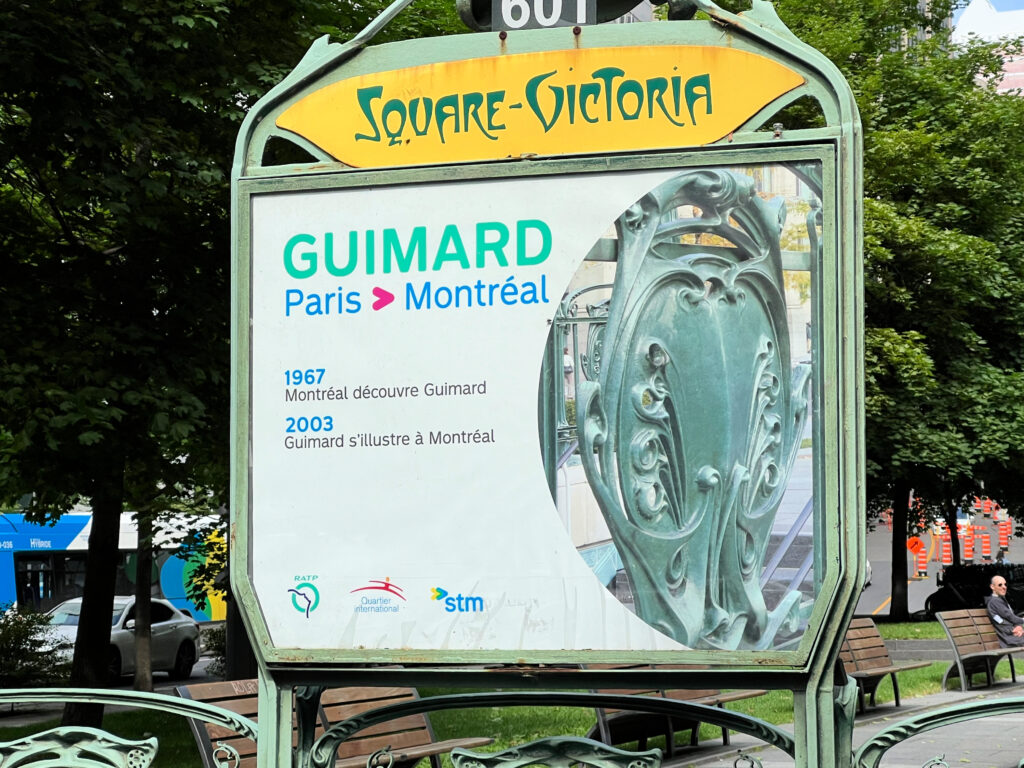
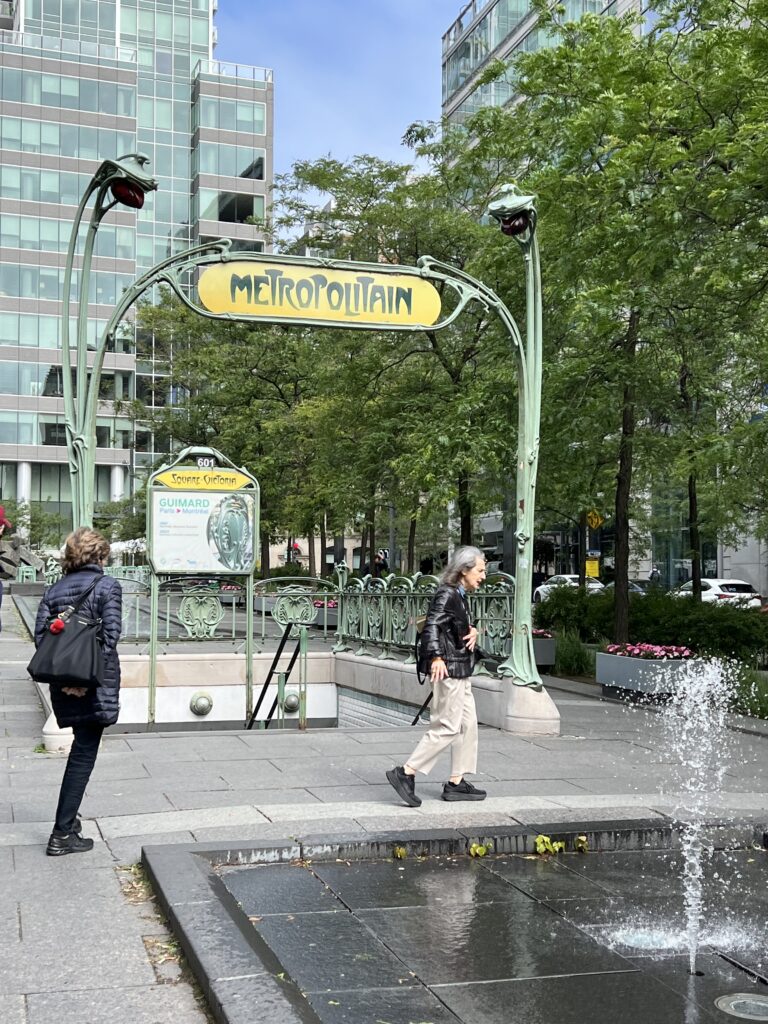
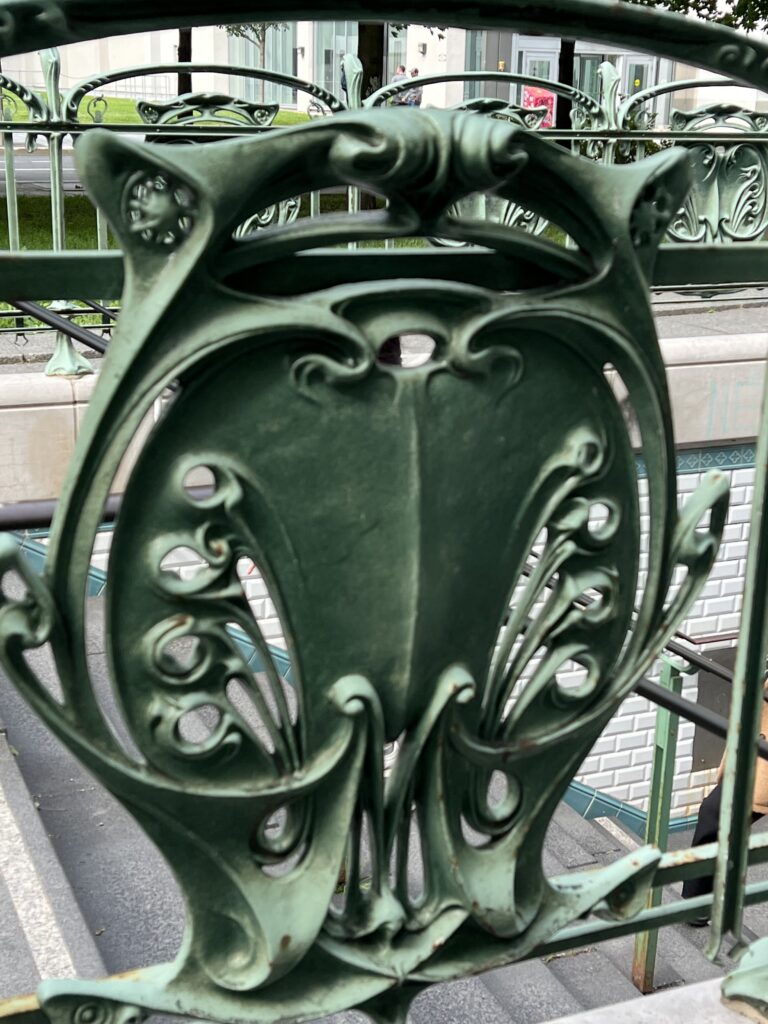
Next is the Royal Bank Tower, built by the Royal Bank of Canada in 1928. At the time, this area of Montreal was comparable to Wall Street in the United States. The building obtained LEED certification in 2011. Bank offices have since moved to other buildings and this building now is home to offices, a cafe and a night club (located in the former bank vault).
The exterior doors have gold trim part of which is designed to resemble coins. The elevator doors are gold and have intricate etchings. What was once teller windows, now serves coffee and pastries to the public.
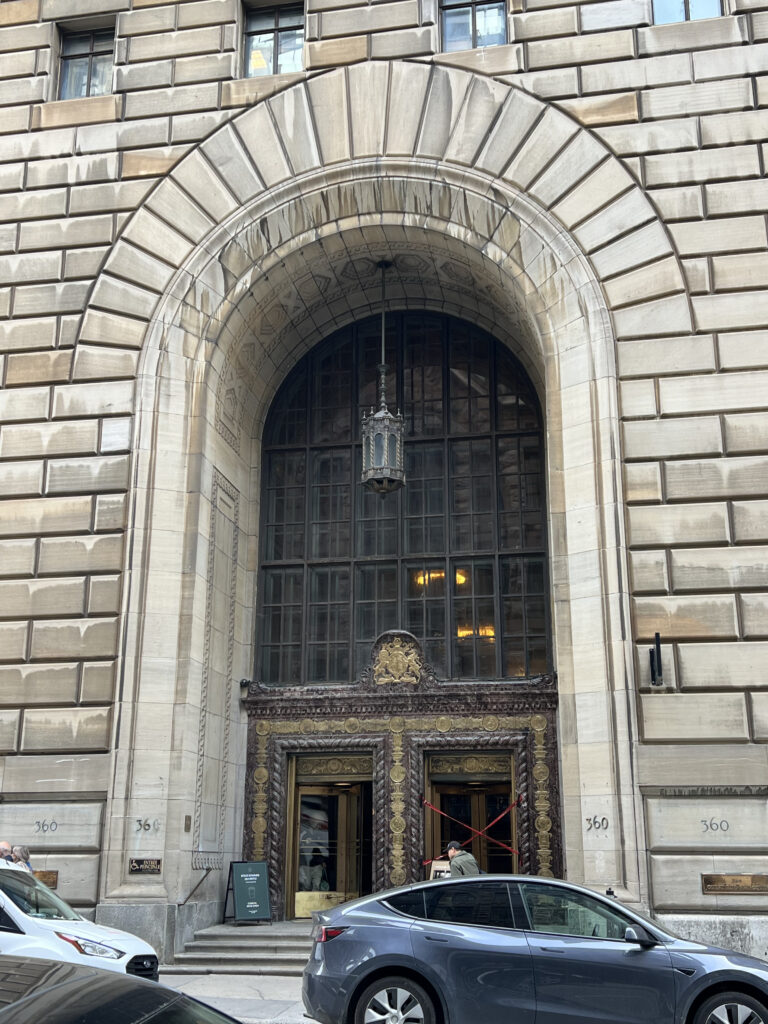
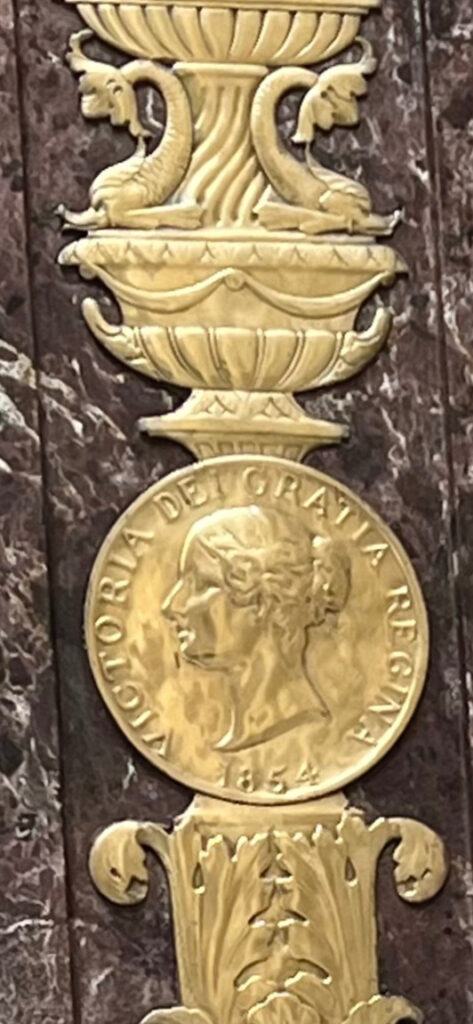
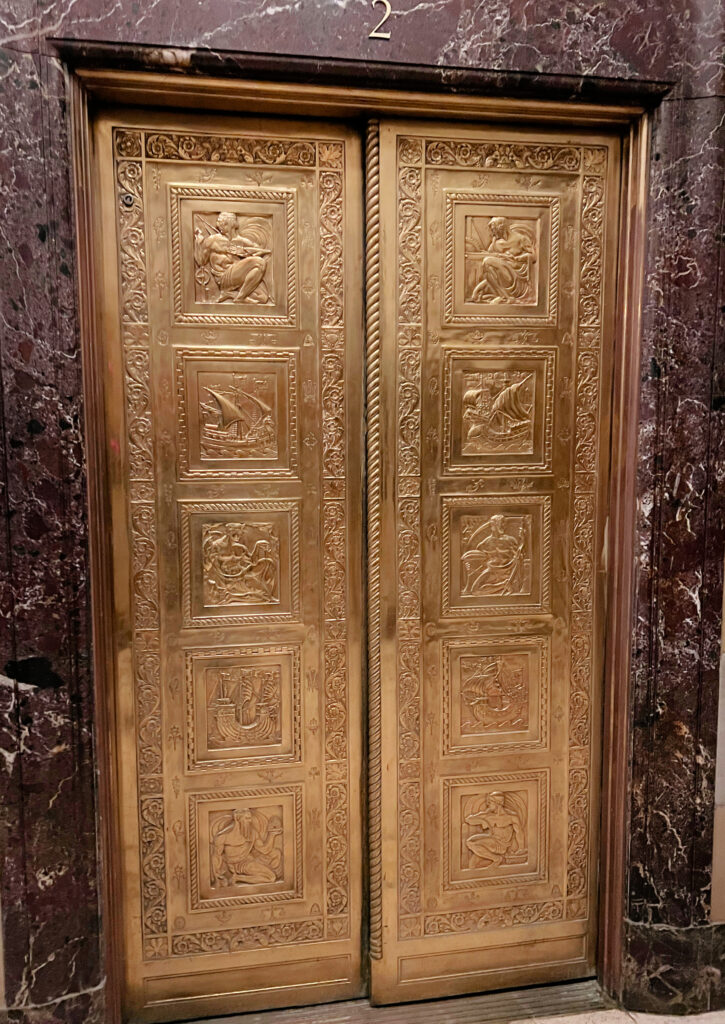
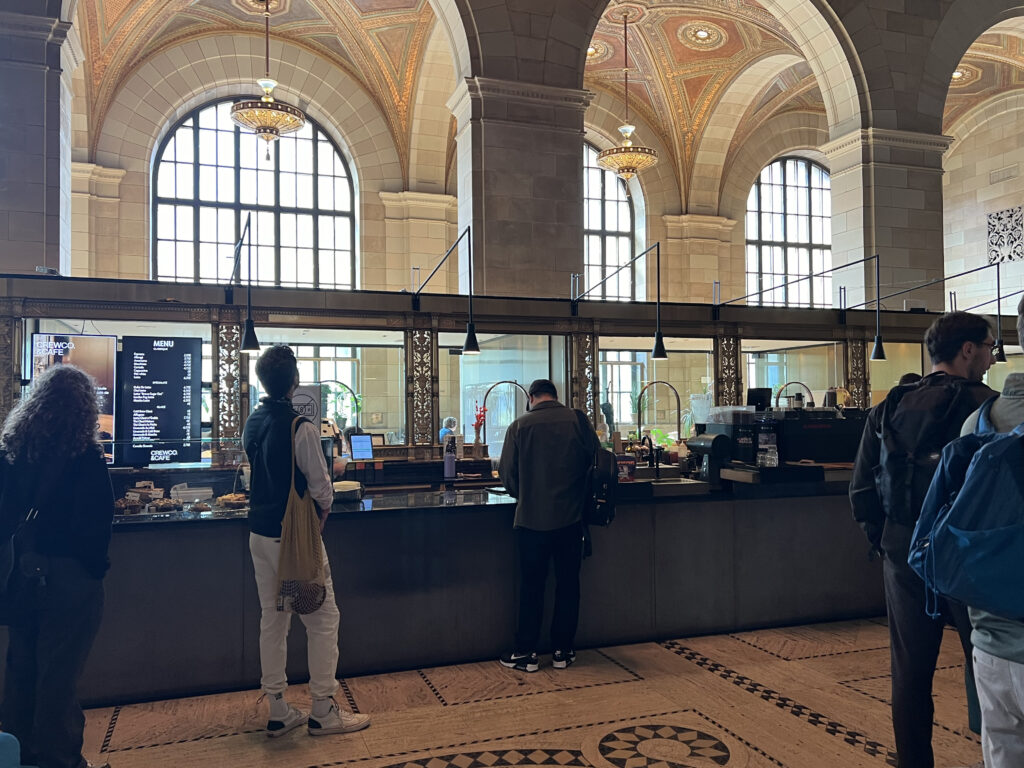
Next is the World Trade Center Montreal. It consists of shops, restaurants, offices, a hotel, a reflecting pool and other art.
Completed in 1992, the building is an example of urban renewal and architectural preservation. The complex united several smaller commercial buildings by surrounding them in a massive glassed-in atrium. From the exterior it appears as a diverse collection of buildings in different styles. Inside, the buildings have been opened up and oriented toward the atrium.
Pictured below is a section of the Berlin Wall, the atrium, and a statue of Aphrodite.
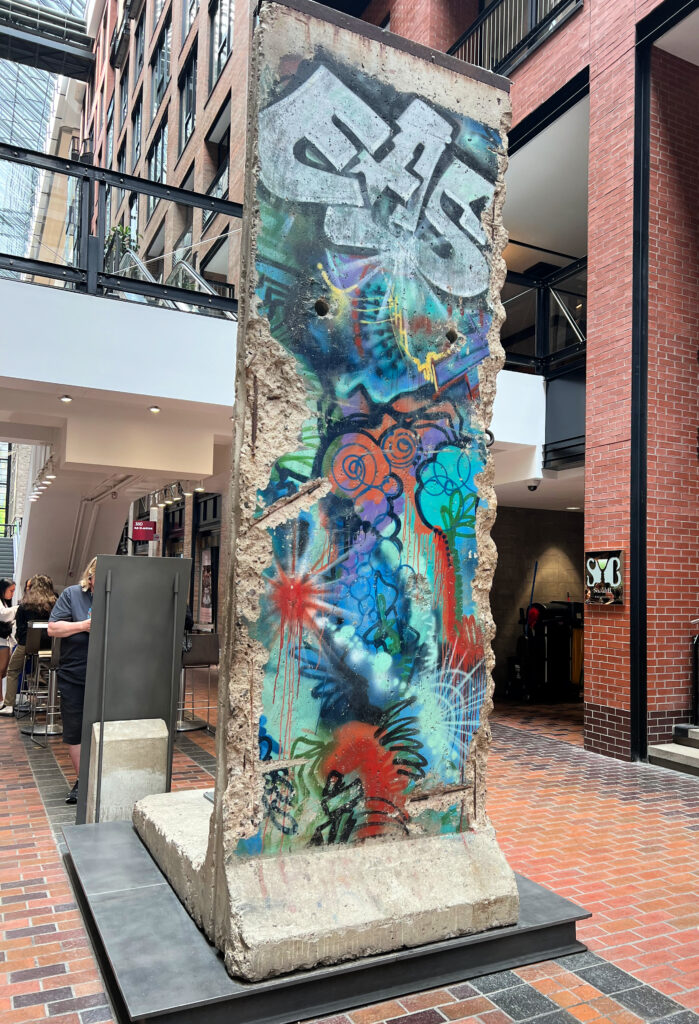
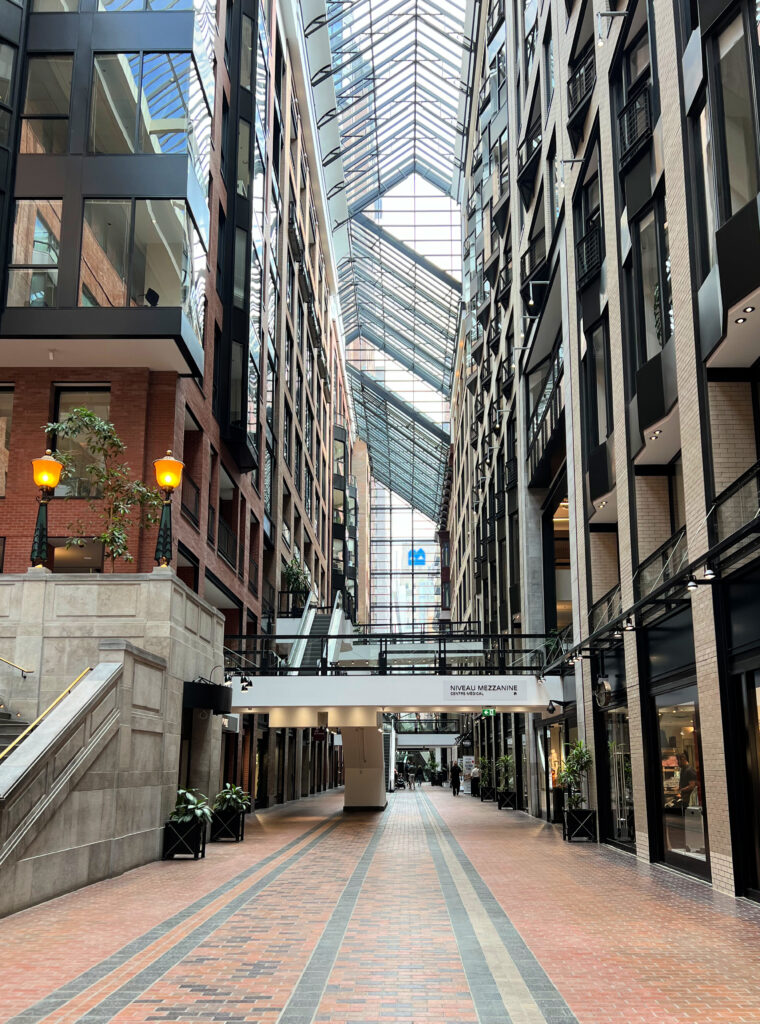
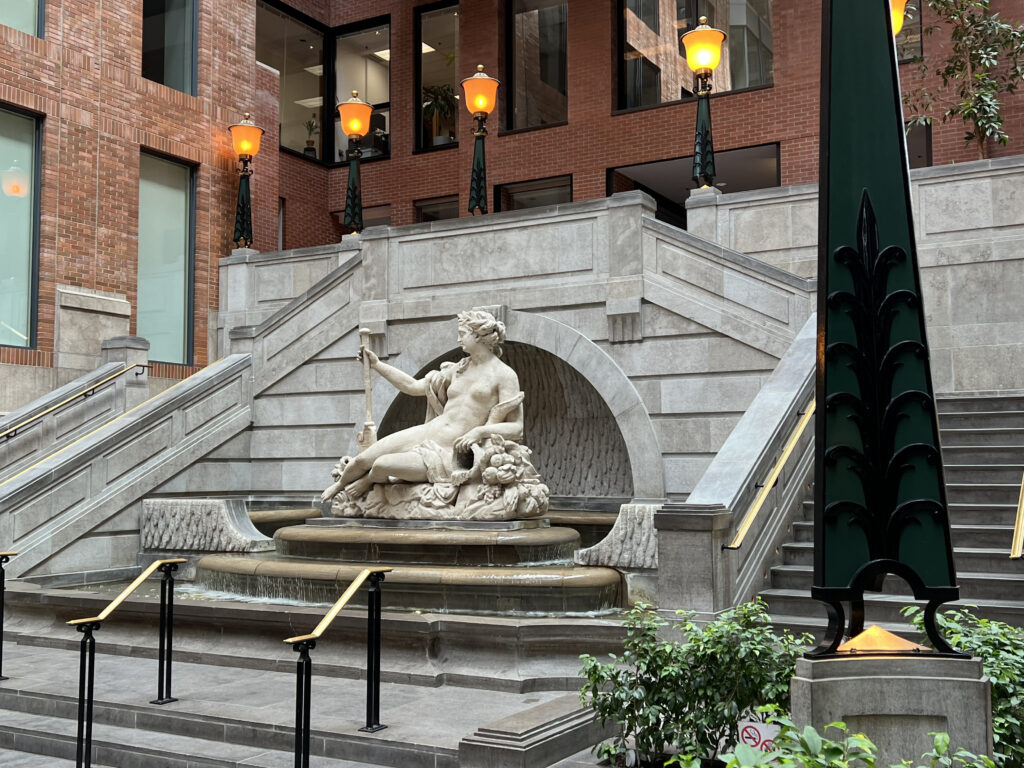
This is Mary, Queen of the World Cathedral. Monseigneur Ignace Bourget, second bishop of Montreal, ordered the construction of the cathedral. He wanted to create a scale model of St. Peter’s Basilica in Rome.
Covering the altar, which is located under the dome, is a baldaquin, with twisting columns. It was created in Rome in 1900 by Joseph-Arthur Vincent and is a reproduction of the famous ‘baldacchino’ in St. Peter’s Basilica, created by Gian Lorenzo Bernini. It is fully hand-made and made with red copper and gold leaf.
In imitation of the statues of the 12 apostles and Christ on the façade of St. Peter’s Basilica, the cathedral is topped by statues of the patron saints of 13 parishes of Montreal that donated toward the cathedral. The statues were sculpted by Olindo Gratton between 1892 and 1898.
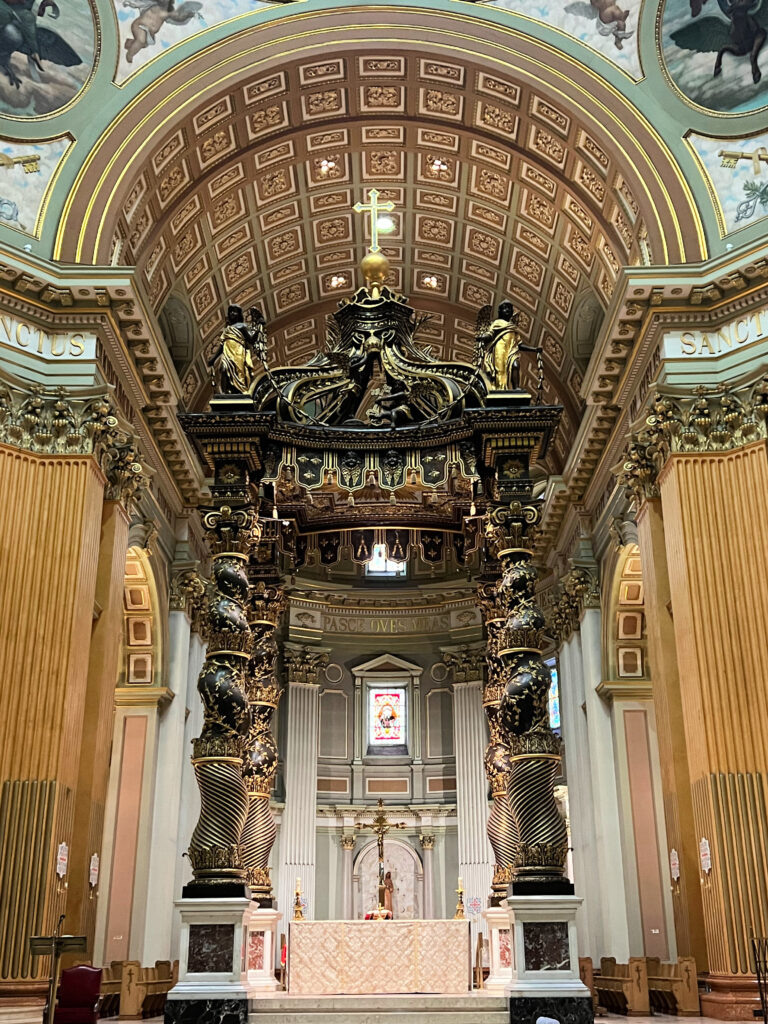
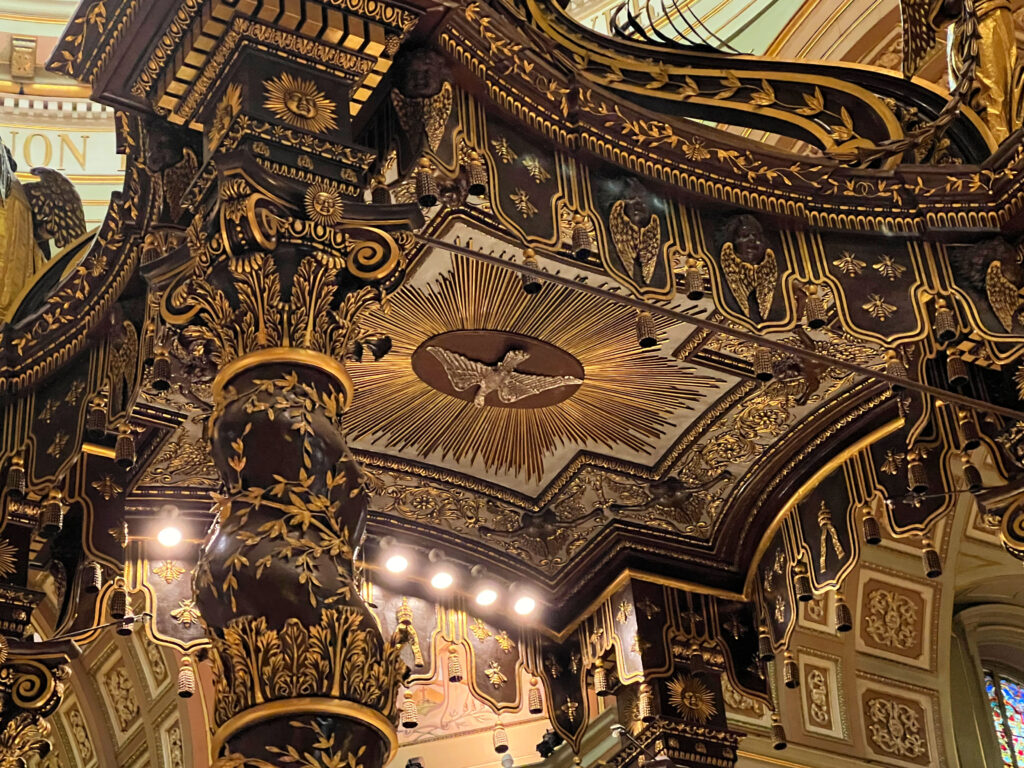
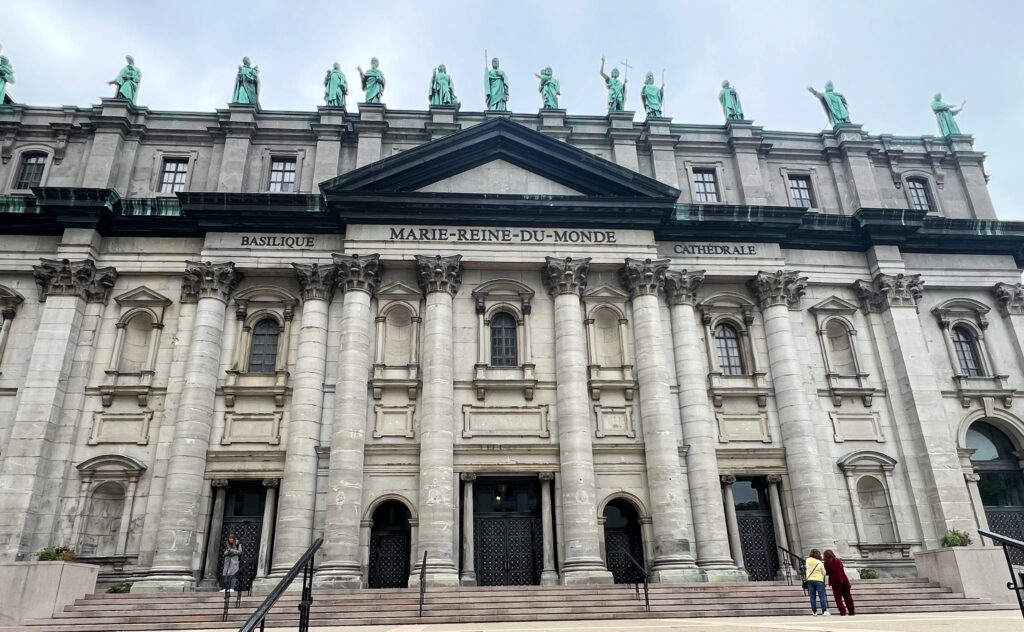
One of my favorite stops on our Canadian Capitals tour was the Notre Dame Basilica in Montreal. Construction for the Basilica began in 1824, replacing an earlier stone church from the 1600s.
Notre-Dame took root in what its now called Old Montreal and was part of the biggest events in the 19th and 20th centuries. Pope John Paul II raised Notre-Dame Church to the rank of minor basilica in 1982. This was an opportunity to recognize the religious, historical and artistic significance of the Notre-Dame Basilica.
Given its significance, Notre-Dame was designated as a national historic site by the Historic Sites and Monuments Board of Canada in 1989. Since its founding, the Basilica has been the site of major religious and cultural events.
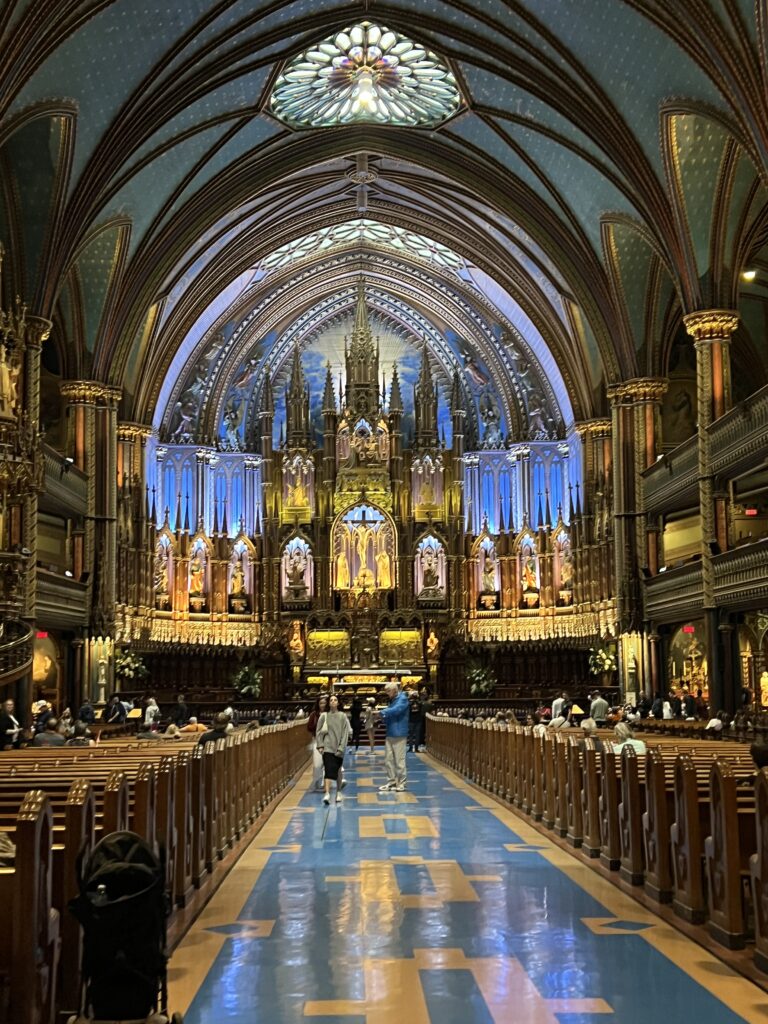
When you walk into the Basilica, your attention is immediately drawn to the altarpiece. The central theme of the altarpiece is the Eucharist as a sacrifice. The Crucifixion is portrayed in the middle of the altarpiece, with Christ depicted on the Cross. The Virgin Mary and Saint John stand on either side and Saint Mary Magdalene kneels at His feet.
Surrounding the Crucifix are four scenes from the Old Testament foretelling the sacrifice of Christ: (1) Moses gives the laws about offering animal sacrifices on the altar (on the upper left of the Crucifix); (2) Aaron, the high priest, sacrifices a lamb according to tradition (upper right); (3) Melchizedek, King of Salem (thought to be Jerusalem), offers bread and wine (lower left); and (4) Abraham is prepared to sacrifice his son, Isaac (lower right).

The Basilica has beautiful stained glass windows and a pipe organ dating back to 1891. It has four keyboards, 99 stops, 7,000 individual pipes and a pedal board.
Also pictured is the pulpit. In the past, the priest would climb its stairs to deliver his sermon; it has not been used since 1962. Architect Victor Bourgeau designed it in the 1870s. Louis-Philippe Hébert carved the sculptures, including the prophets Ezekiel and Jeremiah at the base. Above the guardrail are three figures: Christ teaching and Saints Peter and Paul.
